A
Auto Express
Guest
This year, perhaps more than any other, has thrown up its fair share of obstacles for everybody to overcome. Despite all the disruption, our commitment to bringing you the very best car reviews has been unwavering, and through 2020 we continued to drive and write about every new car that went on sale.
We like a challenge here at Auto Express, and our team of seasoned testers responded to the call - ensuring we were able to deliver the usual high-quality insight and informed verdicts that you've come to expect from the UK's best-selling weekly car magazine.
We were able to drive a host of different machinery, from modest superminis to the latest supercars and everything in between. For us, it's the greatest job in the world, and we hope you continue to enjoy all of our car-related views and opinions through into 2021.
Scroll down below to read our round-up of the biggest drives of 2020...
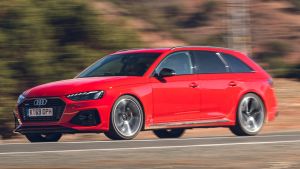
image
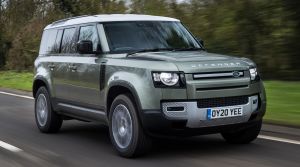
image
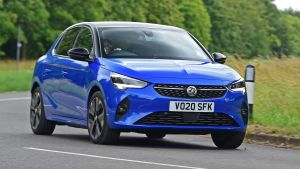
image

image

image

image
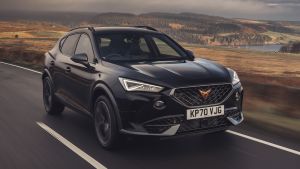
image
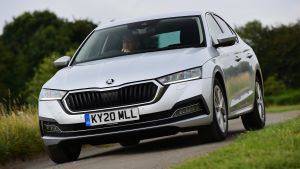
image
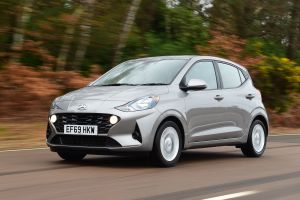
image
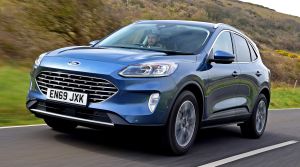
image
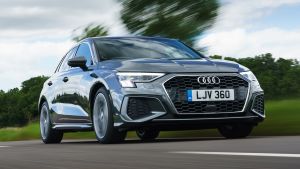
image

image
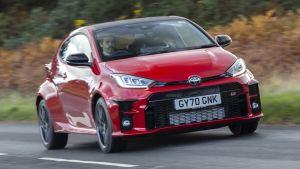
image
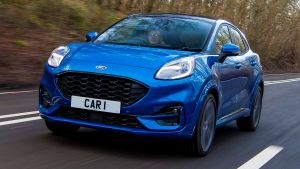
image
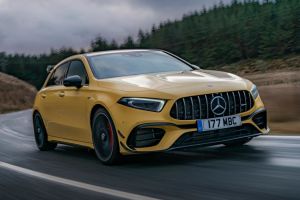
image
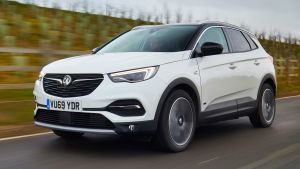
image
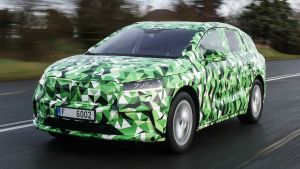
image
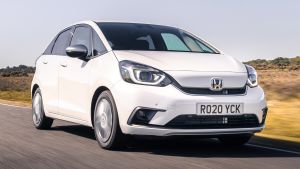
image
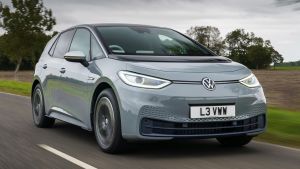
image
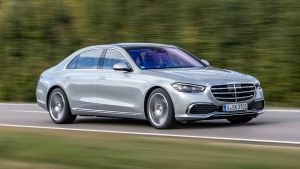
image
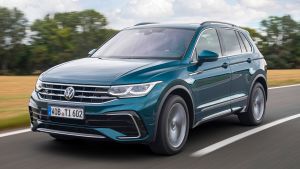
image
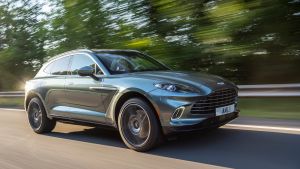
image

image
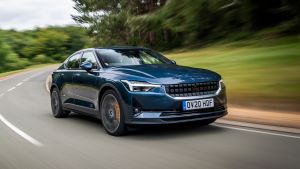
Polestar 2 - front
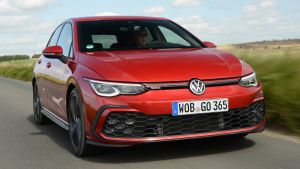
image
This year we started to question whether the city car segment was long for this world, but that didn’t stop Hyundai from launching a new version of its smallest car in January, with the release of the latest i10.
In our first drive of the car we discovered that it was improved in terms of practicality and tech, and its previous traits of being fun to drive, efficient and refined were still present. All this led us to conclude that there was plenty of life left in the city car yet.
Read the full review of the Hyundai i10 here...

image

image

image

image

image

image

image

image

image

image

image

image

image

image

image

image

image

image

image

image

image

image

image

image

Polestar 2 - front
We weren’t sure what to think about the new Ford Puma before it arrived – after all, it shared a name with a totally different kind of car. The old Puma was a sporty coupé, yet this new one was a small SUV.
Thankfully once we’d driven one, we understood: the new Puma is one of the best-handling crossovers ever. It was also impressively refined, comfortable and reasonably economical, too. So even though the looks were divisive, we came away impressed.
Read the full review of the Ford Puma here...

image

image

image

image

image

image

image

image

image

image

image

image

image

image

image

image

image

image

image

image

image

image

image

image

Polestar 2 - front
The Honda e was one of the most hotly anticipated new cars at the start of the year in the Auto Express office, because our staffers loved the way it looked. Our first chance to drive it arrived in January and we were glad that it lived up to our expectations – for the most part.
We found that the Honda e was great to drive, comfortable, refined, and its interior was, if anything even more impressive than the exterior. The hi-tech cabin wowed us with its large display screens, clever innovations and clean, modern look. We couldn’t wait to test it against rivals in the UK.
Read the full review of the Honda e here...

image

image

image

image

image

image

image

image

image

image

image

image

image

image

image

image

image

image

image

image

image

image

image

image

Polestar 2 - front
The Vauxhall Grandland X Hybrid4 arrived in February. We like the standard model, because it has lots of space inside and is good value. However, the plug-in hybrid model didn’t seem quite as convincing.
We were disappointed by the interior quality and the poor ride, but the biggest sticking point was the £46,000 price tag. That’s incredibly expensive for a relatively humble car, and even as the Grandland X range’s flagship model it didn’t make for a good buy.
Read the full review of the Grandland X here...

image

image

image

image

image

image

image

image

image

image

image

image

image

image

image

image

image

image

image

image

image

image

image

image

Polestar 2 - front
If any car was to be described as a mega-hatch, it would be the Mercedes-AMG A 45 S. Its 2.0-litre four-cylinder engine produces an astonishing 415bhp, and our first drive of the car in the UK this year cemented just how impressive that is.
The A 45 S, faster off the line than the AMG GT supercar, was a delight. Its engine sounded great as well, and the grippy chassis meant it was fantastic to drive. The only sticking point was the £50,570 price, which was unheard of for a hot hatch, but we concluded that the car was suitably upmarket to justify its sports car-rivalling price point.
Read the full review of the A 45 S here...

image

image

image

image

image

image

image

image

image

image

image

image

image

image

image

image

image

image

image

image

image

image

image

image

Polestar 2 - front
The Porsche 718 Cayman GTS was one of the most instantly impressive cars we drove this year. It’s not much different to previous four-cylinder Caymans, but the addition of a flat-six engine to the GTS turned it into one of the most exciting and involving driver’s cars on sale. You have to rev its naturally aspirated motor hard, but the unit complements the rest of the car – which is ultra-sharp to drive – perfectly.
Read the full review of the Cayman GTS here...

image

image

image

image

image

image

image

image

image

image

image

image

image

image

image

image

image

image

image

image

image

image

image

Polestar 2 - front

image
The Ford Kuga used to be known as one of the best-driving medium-size SUVs on the market, yet in recent years it lost much of its charm in that area. However this year Ford stormed back with a new model that goes back to the top of the class for handling.
We also found that the new model is good in other areas too: it’s comfortable, practical and full of useful standard kit. We were also pleased by the strong engine line-up, with plenty of choice for all sorts of buyers.
Read the full review of the Ford Kuga here...

image

image

image

image

image

image

image

image

image

image

image

image

image

image

image

image

image

image

image

image

image

image

image

image

Polestar 2 - front
The new Defender was one of our most eagerly anticipated new cars, so we jumped at the chance to get behind the wheel for the first time in Africa. This was set to be a fantastic introduction to the new version of the famously capable off-roader, and so it proved.
We travelled to Opuwo, Namibia, and got behind the wheel of the new Defender, which looked almost alien in the African landscape. The 110 models were kitted out with essentials including roof-mounted spare wheels, sand ladders, winches and extra supplies. After all, the coming days were set to be a trial-by-fire of the new car’s ability at off-roading.
We only drove for 1.8 miles on tarmac before heading off road – and that was all the on-road action we got on the trip. The ground was dry, but recent flooding meant that we had to take care not to damage the cars or get stuck. Even so, we discovered that the Defender was able to hit upwards of 70mph over the loose surface. It was surprisingly agile and fun, too. The air suspension was able to dampen out the bumpy surfaces easily, even though the car is quite heavy.
The next day we were into even tougher terrain – a jagged, rocky route over a mountain that travellers have been taking for decades. It took us hours to travel as little as five miles, yet we were impressed with how capable the Defender proved to be over some of the harshest terrain on the planet. Cameras and other technology in the car helped us to feel confident about placing the car in the perfect spot to get over some of these treacherous rocks.
Next was a section of super-soft sand combined with 40-degree heat, but we were impressed by the Defender’s composure. On day three, we were lucky enough to spot giraffes and elephants, and plotted a route to avoid disturbing them. After that, a river crossing tested the Defender’s ability in deep water. Thankfully, it passed with flying colours and meant we were soon back at the airport, ready to head home.
Our massive feature was accompanied by incredible pictures of the car tackling the landscape, and we were able to produce a video about the trip as well. All of that is on our website and it’s well worth checking out.
Read the full review of the Defender here...

image

image

image

image

image

image

image

image

image

image

image

image

image

image

image

image

image

image

image

image

image

image

image

image

Polestar 2 - front
The Vauxhall Corsa had already shown us some new tricks with its improved driving experience and technology, so when the all-electric Corsa-e was launched, we had high hopes. Sadly, we found that the Corsa-e wasn’t likely to be a small EV frontrunner, because it was too expensive.
The poor ride and unpleasant steering meant that it wasn’t great to drive, either, but it was still impressively quick, well equipped and had a decent amount of range. It was just that other options, particularly the Peugeot e-208 and Renault Zoe, were much better value.
Read the full review of the Corsa-e here...

image

image

image

image

image

image

image

image

image

image

image

image

image

image

image

image

image

image

image

image

image

image

image

Polestar 2 - front

image
It was clear as soon as we drove the new Octavia that Skoda had not tampered with its winning formula. That’s a solid foundation to build on, but with the new fourth-generation Octavia, the engineers had loftier ambitions, pushing its successful recipe even further to create the most convincing version yet.
The Octavia had always been the sensible choice in the family hatchback class, and this new model built on that basic principle. It’s good value for a start, yet it’s also one of the most practical cars in its class; it was almost unheard of until then to have a 600-litre boot in a family hatch – and more in the estate.
The interior impressed as well, with smart materials and a nice 10-inch infotainment display including all the features you could want, pushing the Skoda further upmarket with a complete revolution in the cabin.
The engine range was a strong point as well. The 1.5-litre petrol model remained a fine all-round choice and the 2.0-litre diesel motor was great, too, delivering strong performance and fuel economy. We saw over 66mpg on the trip computer, in fact. Things will only get more frugal with the arrival of two plug-in hybrid versions in 2021.
This new Skoda was just a good to drive as the previous model, with precise steering and a comfy ride. We came away feeling very impressed indeed.
Read the full review of the Skoda Octavia here...

image

image

image

image

image

image

image

image

image

image

image

image

image

image

image

image

image

image

image

image

image

image

image

image

Polestar 2 - front
The Audi RS range has always featured some really appealing fast estate cars. A new version of the RS 4 Avant came out this year and it was as good as ever; it proved to be incredibly fast, massively grippy, yet comfortable and refined on the motorway.
It makes a superb all-rounder, but as we found out in our first drive, the RS 4 isn’t as satisfying to drive as we had hoped. Its engine wasn’t very exciting and it didn’t have the playfulness of a Mercedes-AMG C 63.
Read the full review of the Audi RS 4 Avant here...

image

image

image

image

image

image

image

image

image

image

image

image

image

image

image

image

image

image

image

image

image

image

image

image

Polestar 2 - front
Few premium family cars have been able to match the Audi A3’s appeal in Britain; more than 600,000 have been sold since the car was introduced in 1996, across hatchback, saloon and convertible bodystyles.
We were able to try the latest version – now only available as a five-door Sportback or saloon – this spring, and were pleased and unsurprised to find that it retains many of the key attributes that have made the A3 successful over the years.
The most obvious one was the interior quality, which is as good as ever. There’s a different design direction; it’s no longer unfussy, but instead has an angular, even flamboyant look. This doesn’t detract from the car’s hi-tech feel though.
The driving experience didn’t appear to have changed much, though. We found that the new one had similar levels of comfort and refinement to the previous model. That was no bad thing, because the A3 was pleasant to drive at any speed.
Read the full review of the Audi A3 here...

image

image

image

image

image

image

image

image

image

image

image

image

image

image

image

image

image

image

image

image

image

image

image

Polestar 2 - front

image
The Skoda Enyaq was one of the most important new cars launched in 2020 and we got an early taste of it in May.
It’s the brand’s first all-electric car, and will use the same platform as the recently released Volkswagen ID.3 (called MEB). After a drive in a camouflaged prototype, we concluded that, even at that early stage, the Enyaq would be a strong competitor in the electric car market.
We found the prototype quiet and refined, with impressive in-car tech and a really smart cabin. Over the potholed roads on our Irish test drive route the Enyaq was very impressive, and left us eagerly anticipating the production version.
Read the full review of the Enyaq EV here...

image

image

image

image

image

image

image

image

image

image

image

image

image

image

image

image

image

image

image

image

image

image

image

Polestar 2 - front

image
Tesla’s core model range was completed this year with the introduction of the Model Y. Now the brand has models in all of the key premium car markets: a large saloon (Model S), a large SUV (Model X), a compact executive saloon (Model 3) and now, a medium-size SUV. Our first chance to try the car in Europe arrived in June.
The Model Y that we drove featured a dual-motor, four-wheel-drive set-up, and the incredible power (no figures were quoted by Tesla, but it was clearly potent) was able to mask the Model Y’s weight and size well. We said that no other SUV of a similar size would be able to get close to the performance on offer.
With a range of around 298 miles on a fully charged battery, the Tesla stacks up well for daily use as well – although we realised that a heavy right foot can deplete the range quickly.
We also discovered that the Model Y is stiffer than we expected – the Performance version’s slightly firm suspension meant that it was less comfortable than we’d have liked. At least this set-up meant that the Model Y felt agile in twistier sections, although we criticised its steering for lacking feel and feedback from the road.
Compared with the Model 3 – which shares the same platform – the Model Y’s higher centre of gravity was obvious but the new SUV was more balanced and agile than the larger and heavier Model X, with minimal body roll and plenty of grip.
We were also glad to see a new off-road assist feature, which smooths out the throttle response to help reduce the risk of the tyres breaking traction on loose surfaces. Combined with four-wheel drive, it should give the Model Y some off-road ability, although we were quick to point out that this was far from the car’s comfort zone.
The brakes were strong enough to haul the Model Y to a stop consistently, and there was a strong braking effect on lifting off in the default setting. You can change the amount of energy recuperation if you want to, though, which we were glad to see.
When it came to the interior, the only changes from the Model 3 that we noticed were a larger panoramic roof and a powered tailgate, but some of the materials inside didn’t feel like what we’ve come to expect in a premium SUV. Cabin space was generous and, as you might expect, the boot was spacious too. While there was room for improvement, the Tesla Model Y was still very impressive.
Read the full review of the Tesla Model Y here...

image

image

image

image

image

image

image

image

image

image

image

image

image

image

image

image

image

image

image

image

image

image

image

Polestar 2 - front

image
The Volkswagen ID.3 was one of our most highly anticipated new cars of 2020 and our first drive showed that it didn’t disappoint.
We said that the ID.3 offered great practicality and refinement, low running costs and strong performance, and things would only get better when cheaper models arrived later in the year. It proved a really strong start for models using the new MEB electric car platform from VW.
Read the full review of the ID.3 here...

image

image

image

image

image

image

image

image

image

image

image

image

image

image

image

image

image

image

image

image

image

image

image

Polestar 2 - front

image
The Honda e was the focus of attention this year, but a new Jazz is a lot more than a footnote for the Japanese brand. When we drove the new hybrid model, we found that it retained all the key features of previous versions, yet brought new-found efficiency and refinement to the mix.
The part-electric powertrain meant that it was impressively quiet, especially at lower speeds. It seemed to be very efficient on our test drive as well, and it was very easy to drive. However, we found that it wasn’t much fun – it was composed and safe, but nowhere near as enjoyable as the rival Ford Fiesta, for example.
Read the full review of the Honda Jazz here...

image

image

image

image

image

image

image

image

image

image

image

image

image

image

image

image

image

image

image

image

image

image

image

Polestar 2 - front

image
A new Ferrari is always an event, but the SF90 was something else. With 987bhp, it’s one of the most powerful production cars ever, and can accelerate from 0-62mph in just 2.5 seconds.
It’s also new territory for Ferrari, thanks to its V8 petrol/triple-electric motor set-up making it the brand’s first plug-in hybrid. We described it as mind-blowing, with an intense and accessible driving experience like nothing else.
Read the full review of the Ferrari SF90 here...

image

image

image

image

image

image

image

image

image

image

image

image

image

image

image

image

image

image

image

image

image

image

image

image

Polestar 2 - front
Volvo’s sister brand Polestar arrived in 2020 with one of the first cars to properly rival the Tesla Model 3, the Polestar 2. While we found that the 2 wasn’t as fast or as efficient as the Tesla, its better build quality, more stylish cabin and strong refinement all landed as reasons for EV buyers to consider one over the Model 3.
From behind the wheel, we said that the Polestar 2 was a little on the firm side, and although it was good to drive, it could offer more excitement to the driver. Yet with a 0-62mph time of 4.7 seconds and a range of 292 miles, it’s a fantastic all-rounder.
Read the full review of the Polestar 2 here...

image

image

image

image

image

image

image

image

image

image

image

image

image

image

image

image

image

image

image

image

image

image

image

Polestar 2 - front

image
Sports car makers are increasingly unable to build a business on niche cars aimed at enthusiasts, so brands like Aston Martin need to build practical models to sell in big numbers and balance the books. This year the British firm brought out the DBX, its first SUV and the car that it hopes will bring financial stability in the future.
We drove the production car for the first time in 2020’s hot summer. The DBX was clearly an Aston from outside – its design echoes the brand’s sports cars and the grille is the most obvious family link. We found that it was actually bigger than it looked, because Aston’s designers wanted it to seem less brash than something like a Range Rover.
Yet while the DBX has a more subtle exterior, we found that its engine was just as vocal as any one of its rivals. The 4.0-litre petrol V8 from Mercedes has 542bhp and 700Nm of torque, so performance was astonishing and it had the right soundtrack, too: a V8 roar when you put your foot down, but smooth and refined at a cruise.
That impressive power is delivered via a nine-speed automatic gearbox that lets the DBX go from 0-60mph in 4.3 seconds. Its top speed of 181mph isn’t bad for a 2.2-tonne family SUV, either. We concluded that the DBX had performance worthy of a sports car maker like Aston.
The handling was just as good. Thanks to the car’s six driving modes (including an Individual setting), which let you tune the DBX’s chassis, steering, engine, gearbox and exhaust, you can set up the car how you like it. That means it can be comfortable or sporty depending on the road.
We also found that the DBX’s steering was quick and had plenty of feel, and the engine was responsive. In fact, we said, it’s one of the best-handling large SUVs around.
A full-length panoramic sunroof made it airy inside and there was leather everywhere. The other materials were of high quality, although a Bentley Bentayga is better built.
We also said that because Aston has had to rely on its partner, parts of the interior are lacking. The infotainment and switchgear are all from Mercedes cars, which might be a good thing if it were current, but the 12.3-inch screen is a generation behind Mercedes’ current models. It’s not great to use, we said, and the dash looks a bit old-fashioned.
However we were able to forgive the DBX that because it had all the practicality and refinement you could need in a luxury SUV, yet was also really good to drive. Given this is a machine that weighs over two tonnes, it was incredibly agile through a series of bends, yet you could easily seat five people in comfort.
After our first drive, we pointed out that the DBX is less brash than a Lamborghini Urus, not as bold as a Bentley Bentayga and more exclusive than a Porsche Cayenne. It’s a superb first effort at building an SUV from Aston Martin and certainly one of our highlights of 2020.
Read the full review of the Aston Martin DBX here...

image

image

image

image

image

image

image

image

image

image

image

image

image

image

image

image

image

image

image

image

image

image

image

Polestar 2 - front

image
Many argue that the Volkswagen Golf GTI was the original hot hatch, so a new one is always exciting.
We discovered that despite this version being less exciting than a Honda Civic Type R, it’s still one of the best all-rounders because it’s just as practical and easy to drive as a normal Golf, yet is fun when you want. We said that it offers a great balance between comfort and body control, and that it feels more alive and alert in corners than past versions.
Read the full review of the VW Golf GTI here...

image

image

image

image

image

image

image

image

image

image

image

image

image

image

image

image

image

image

image

image

image

image

image

Polestar 2 - front

image
The Volkswagen Tiguan is one of VW’s most popular cars, so it was logical that this year’s revised version wouldn’t stray too far from the winning formula.
The mid-life facelift added new tech and a new look, but we found that it was remarkably similar to the previous version on the road. That meant it was unremarkable to drive but comfortable, and with a good engine range bringing economy mixed with punchy performance.
Read the full review of the Tiguan here...

image

image

image

image

image

image

image

image

image

image

image

image

image

image

image

image

image

image

image

image

image

image

image

Polestar 2 - front

image
The launch of a new Mercedes S-Class has become an event that the whole industry pays attention to, because the limo always comes packed with cutting-edge tech that will make its way into humbler Mercedes models. The arrival of 2020’s new S-Class was exciting, despite the fact that it looks so similar to the previous generation.
For a start, the S-Class is the first car to have Level 3 autonomous driving, which means it can assume full control on motorways during daylight hours, where legal. We found that it might need some fine-tuning when we tested it on a track, but it’s clear this technology is on the way.
The S-Class proved to be incredibly quiet inside; apart from a rustle of wind we noticed around the door mirrors at 70mph, it proved to be library-like in the cabin. Even the engine was almost inaudible, except under hard acceleration. The model we tested (an S 400d 4MATIC) used a 2.9-litre six-cylinder diesel with 325bhp and 700Nm, so 0-62mph takes just 5.4 seconds, yet it can do 38.7mpg. It’s also four-wheel drive, which is a first for the S-Class in the UK.
We found that the new model was superbly comfortable at motorway speeds, just like previous generations, yet the S-Class surprised us with its precise steering and minimal body roll, so it was quite good to drive as well.
The optional active body control (ABC) system helped the air suspension to tackle all sorts of roads easily.
Another feature of our test car was the optional four-wheel steering. It means the S-Class has the same turning circle as an A-Class hatch. The S-Class wasn’t first with this, because Audi and Porsche models have had this feature for years, but it’s impressive nonetheless in a car so large.
Other clever new tech included augmented reality as part of the head-up display, telling you exactly where to turn via the sat-nav program.
Overall we said that the S-Class pushes boundaries with game-changing technology, plus incredible refinement and comfort. Future plug-in versions looked like they’ll be best, but even the diesel we tried was superb.
Read the full review of of the S-Class here...

image

image

image

image

image

image

image

image

image

image

image

image

image

image

image

image

image

image

image

image

image

image

image

Polestar 2 - front

image
The Cupra Formentor is the performance brand’s first standalone model; it’s not based on a car built by sister firm SEAT. During our first drive, we found that it drives as well as it looks.
It uses similar ingredients to the Cupra Ateca, including a 2.0-litre four-cylinder petrol with 306bhp and four-wheel drive, so it’s fast, fun and grippy. It’s pretty practical, too, although we weren’t too impressed with the interior plastics.
Read the full review of the Cupra Formentor here...

image

image

image

image

image

image

image

image

image

image

image

image

image

image

image

image

image

image

image

image

image

image

image

Polestar 2 - front

image
Toyota’s GR Yaris emerged as one of the stars of 2020 when we finally had the chance to get behind the wheel of the tiny hot hatch for a first drive.
The car was intended as a homologation special to support Toyota’s effort in the World Rally Championship in 2021. But while the GR Yaris rally project was scrapped, 25,000 road cars will still be built. Power is provided by a turbocharged 1.6-litre three-cylinder turbo petrol engine developing 257bhp and 360Nm torque, while drive is sent to all four wheels through a six-speed manual ’box. Toyota says 0-62mph takes 5.5 seconds, and top speed is 143mph.
It’s fair to say the special Yaris left a big impression on tester Steve Sutcliffe. He called it “a car that will be written about and cherished by enthusiasts for many years.”
It’s not just the straight-line performance of this pocket rocket that hits home; it’s the way it simply eats up B-roads that marks it out as one of the most special performance cars of the past few years. Across country, we’d wager that some genuine supercars wouldn’t be able to keep up, thanks to not just the power and poise but the stopping power too. Despite its relatively tiny size, the GR Yaris has huge brakes that have been lifted from the Supra.
However, this Yaris isn’t just a rally monster. While the chassis and suspension work is serious GR division stuff, it’s still a comfortable and practical family supermini. It’s well finished inside, too, combining high-quality, standard Yaris parts with huge bucket seats and other touches that hint at the level of performance on offer.
At £29,995 – rising to £33,495 for a Circuit Pack car – it’s certainly an expensive supermini, and well beyond the price of our favourite in this segment, the Ford Fiesta ST. However, the GR Yaris has far more performance than the Ford, and a truly special chassis and driveline combination.
Read the full review of the GR Toyota Yaris here...

image

image

image

image

image

image

image

image

image

image

image

image

image

image

image

image

image

image

image

image

image

image

image

Polestar 2 - front

image
The Ford Fiesta ST has been our favourite small hot hatch since it was launched in 2018. In 2020, Ford applied the successful recipe to the new Puma, and we found that the company’s performance division had once again come up with the goods.
Finally, a small SUV that’s fun to drive was born. With 197bhp on tap from the 1.5-litre three-cylinder turbo petrol engine and an excellently judged chassis, it’s the most convincing hot crossover to date.
Read the full review of the Puma ST here...
Check out the rest of our 2020 round-up below...
Continue reading...
We like a challenge here at Auto Express, and our team of seasoned testers responded to the call - ensuring we were able to deliver the usual high-quality insight and informed verdicts that you've come to expect from the UK's best-selling weekly car magazine.
We were able to drive a host of different machinery, from modest superminis to the latest supercars and everything in between. For us, it's the greatest job in the world, and we hope you continue to enjoy all of our car-related views and opinions through into 2021.
Scroll down below to read our round-up of the biggest drives of 2020...
January
Hyundai i10 flies the flag for small city cars

image

image

image

image

image

image

image

image

image

image

image

image

image

image

image

image

image

image

image

image

image

image

image

Polestar 2 - front

image
This year we started to question whether the city car segment was long for this world, but that didn’t stop Hyundai from launching a new version of its smallest car in January, with the release of the latest i10.
In our first drive of the car we discovered that it was improved in terms of practicality and tech, and its previous traits of being fun to drive, efficient and refined were still present. All this led us to conclude that there was plenty of life left in the city car yet.
Read the full review of the Hyundai i10 here...
New Ford Puma impresses on the road

image

image

image

image

image

image

image

image

image

image

image

image

image

image

image

image

image

image

image

image

image

image

image

image

Polestar 2 - front
We weren’t sure what to think about the new Ford Puma before it arrived – after all, it shared a name with a totally different kind of car. The old Puma was a sporty coupé, yet this new one was a small SUV.
Thankfully once we’d driven one, we understood: the new Puma is one of the best-handling crossovers ever. It was also impressively refined, comfortable and reasonably economical, too. So even though the looks were divisive, we came away impressed.
Read the full review of the Ford Puma here...
Honda e fulfills concept car promise

image

image

image

image

image

image

image

image

image

image

image

image

image

image

image

image

image

image

image

image

image

image

image

image

Polestar 2 - front
The Honda e was one of the most hotly anticipated new cars at the start of the year in the Auto Express office, because our staffers loved the way it looked. Our first chance to drive it arrived in January and we were glad that it lived up to our expectations – for the most part.
We found that the Honda e was great to drive, comfortable, refined, and its interior was, if anything even more impressive than the exterior. The hi-tech cabin wowed us with its large display screens, clever innovations and clean, modern look. We couldn’t wait to test it against rivals in the UK.
Read the full review of the Honda e here...
February
Pricey Grandland X flagship doesn’t convince

image

image

image

image

image

image

image

image

image

image

image

image

image

image

image

image

image

image

image

image

image

image

image

image

Polestar 2 - front
The Vauxhall Grandland X Hybrid4 arrived in February. We like the standard model, because it has lots of space inside and is good value. However, the plug-in hybrid model didn’t seem quite as convincing.
We were disappointed by the interior quality and the poor ride, but the biggest sticking point was the £46,000 price tag. That’s incredibly expensive for a relatively humble car, and even as the Grandland X range’s flagship model it didn’t make for a good buy.
Read the full review of the Grandland X here...
A 45 S ramps up mega-hatchback heat

image

image

image

image

image

image

image

image

image

image

image

image

image

image

image

image

image

image

image

image

image

image

image

image

Polestar 2 - front
If any car was to be described as a mega-hatch, it would be the Mercedes-AMG A 45 S. Its 2.0-litre four-cylinder engine produces an astonishing 415bhp, and our first drive of the car in the UK this year cemented just how impressive that is.
The A 45 S, faster off the line than the AMG GT supercar, was a delight. Its engine sounded great as well, and the grippy chassis meant it was fantastic to drive. The only sticking point was the £50,570 price, which was unheard of for a hot hatch, but we concluded that the car was suitably upmarket to justify its sports car-rivalling price point.
Read the full review of the A 45 S here...
Flat-six engine is a big hit in Cayman GTS

image

image

image

image

image

image

image

image

image

image

image

image

image

image

image

image

image

image

image

image

image

image

image

image

Polestar 2 - front
The Porsche 718 Cayman GTS was one of the most instantly impressive cars we drove this year. It’s not much different to previous four-cylinder Caymans, but the addition of a flat-six engine to the GTS turned it into one of the most exciting and involving driver’s cars on sale. You have to rev its naturally aspirated motor hard, but the unit complements the rest of the car – which is ultra-sharp to drive – perfectly.
Read the full review of the Cayman GTS here...
March
Ford Kuga is again best-driving medium SUV

image

image

image

image

image

image

image

image

image

image

image

image

image

image

image

image

image

image

image

image

image

image

image

Polestar 2 - front

image
The Ford Kuga used to be known as one of the best-driving medium-size SUVs on the market, yet in recent years it lost much of its charm in that area. However this year Ford stormed back with a new model that goes back to the top of the class for handling.
We also found that the new model is good in other areas too: it’s comfortable, practical and full of useful standard kit. We were also pleased by the strong engine line-up, with plenty of choice for all sorts of buyers.
Read the full review of the Ford Kuga here...
New Defender shows off its strengths

image

image

image

image

image

image

image

image

image

image

image

image

image

image

image

image

image

image

image

image

image

image

image

image

Polestar 2 - front
The new Defender was one of our most eagerly anticipated new cars, so we jumped at the chance to get behind the wheel for the first time in Africa. This was set to be a fantastic introduction to the new version of the famously capable off-roader, and so it proved.
We travelled to Opuwo, Namibia, and got behind the wheel of the new Defender, which looked almost alien in the African landscape. The 110 models were kitted out with essentials including roof-mounted spare wheels, sand ladders, winches and extra supplies. After all, the coming days were set to be a trial-by-fire of the new car’s ability at off-roading.
We only drove for 1.8 miles on tarmac before heading off road – and that was all the on-road action we got on the trip. The ground was dry, but recent flooding meant that we had to take care not to damage the cars or get stuck. Even so, we discovered that the Defender was able to hit upwards of 70mph over the loose surface. It was surprisingly agile and fun, too. The air suspension was able to dampen out the bumpy surfaces easily, even though the car is quite heavy.
The next day we were into even tougher terrain – a jagged, rocky route over a mountain that travellers have been taking for decades. It took us hours to travel as little as five miles, yet we were impressed with how capable the Defender proved to be over some of the harshest terrain on the planet. Cameras and other technology in the car helped us to feel confident about placing the car in the perfect spot to get over some of these treacherous rocks.
Next was a section of super-soft sand combined with 40-degree heat, but we were impressed by the Defender’s composure. On day three, we were lucky enough to spot giraffes and elephants, and plotted a route to avoid disturbing them. After that, a river crossing tested the Defender’s ability in deep water. Thankfully, it passed with flying colours and meant we were soon back at the airport, ready to head home.
Our massive feature was accompanied by incredible pictures of the car tackling the landscape, and we were able to produce a video about the trip as well. All of that is on our website and it’s well worth checking out.
Read the full review of the Defender here...
Expensive electric Corsa-e lags behind rivals

image

image

image

image

image

image

image

image

image

image

image

image

image

image

image

image

image

image

image

image

image

image

image

image

Polestar 2 - front
The Vauxhall Corsa had already shown us some new tricks with its improved driving experience and technology, so when the all-electric Corsa-e was launched, we had high hopes. Sadly, we found that the Corsa-e wasn’t likely to be a small EV frontrunner, because it was too expensive.
The poor ride and unpleasant steering meant that it wasn’t great to drive, either, but it was still impressively quick, well equipped and had a decent amount of range. It was just that other options, particularly the Peugeot e-208 and Renault Zoe, were much better value.
Read the full review of the Corsa-e here...
Impressive new Skoda Octavia builds on old model’s winning formula

image

image

image

image

image

image

image

image

image

image

image

image

image

image

image

image

image

image

image

image

image

image

image

Polestar 2 - front

image
It was clear as soon as we drove the new Octavia that Skoda had not tampered with its winning formula. That’s a solid foundation to build on, but with the new fourth-generation Octavia, the engineers had loftier ambitions, pushing its successful recipe even further to create the most convincing version yet.
The Octavia had always been the sensible choice in the family hatchback class, and this new model built on that basic principle. It’s good value for a start, yet it’s also one of the most practical cars in its class; it was almost unheard of until then to have a 600-litre boot in a family hatch – and more in the estate.
The interior impressed as well, with smart materials and a nice 10-inch infotainment display including all the features you could want, pushing the Skoda further upmarket with a complete revolution in the cabin.
The engine range was a strong point as well. The 1.5-litre petrol model remained a fine all-round choice and the 2.0-litre diesel motor was great, too, delivering strong performance and fuel economy. We saw over 66mpg on the trip computer, in fact. Things will only get more frugal with the arrival of two plug-in hybrid versions in 2021.
This new Skoda was just a good to drive as the previous model, with precise steering and a comfy ride. We came away feeling very impressed indeed.
Read the full review of the Skoda Octavia here...
New Audi RS 4 Avant isn’t quite the full package

image

image

image

image

image

image

image

image

image

image

image

image

image

image

image

image

image

image

image

image

image

image

image

image

Polestar 2 - front
The Audi RS range has always featured some really appealing fast estate cars. A new version of the RS 4 Avant came out this year and it was as good as ever; it proved to be incredibly fast, massively grippy, yet comfortable and refined on the motorway.
It makes a superb all-rounder, but as we found out in our first drive, the RS 4 isn’t as satisfying to drive as we had hoped. Its engine wasn’t very exciting and it didn’t have the playfulness of a Mercedes-AMG C 63.
Read the full review of the Audi RS 4 Avant here...
April
New Audi A3 delivers sharper looks and the same refined character

image

image

image

image

image

image

image

image

image

image

image

image

image

image

image

image

image

image

image

image

image

image

image

image

Polestar 2 - front
Few premium family cars have been able to match the Audi A3’s appeal in Britain; more than 600,000 have been sold since the car was introduced in 1996, across hatchback, saloon and convertible bodystyles.
We were able to try the latest version – now only available as a five-door Sportback or saloon – this spring, and were pleased and unsurprised to find that it retains many of the key attributes that have made the A3 successful over the years.
The most obvious one was the interior quality, which is as good as ever. There’s a different design direction; it’s no longer unfussy, but instead has an angular, even flamboyant look. This doesn’t detract from the car’s hi-tech feel though.
The driving experience didn’t appear to have changed much, though. We found that the new one had similar levels of comfort and refinement to the previous model. That was no bad thing, because the A3 was pleasant to drive at any speed.
Read the full review of the Audi A3 here...
May
Prototype whets our appetite for Enyaq EV

image

image

image

image

image

image

image

image

image

image

image

image

image

image

image

image

image

image

image

image

image

image

image

Polestar 2 - front

image
The Skoda Enyaq was one of the most important new cars launched in 2020 and we got an early taste of it in May.
It’s the brand’s first all-electric car, and will use the same platform as the recently released Volkswagen ID.3 (called MEB). After a drive in a camouflaged prototype, we concluded that, even at that early stage, the Enyaq would be a strong competitor in the electric car market.
We found the prototype quiet and refined, with impressive in-car tech and a really smart cabin. Over the potholed roads on our Irish test drive route the Enyaq was very impressive, and left us eagerly anticipating the production version.
Read the full review of the Enyaq EV here...
June
New Tesla Model Y on the road in Europe

image

image

image

image

image

image

image

image

image

image

image

image

image

image

image

image

image

image

image

image

image

image

image

Polestar 2 - front

image
Tesla’s core model range was completed this year with the introduction of the Model Y. Now the brand has models in all of the key premium car markets: a large saloon (Model S), a large SUV (Model X), a compact executive saloon (Model 3) and now, a medium-size SUV. Our first chance to try the car in Europe arrived in June.
The Model Y that we drove featured a dual-motor, four-wheel-drive set-up, and the incredible power (no figures were quoted by Tesla, but it was clearly potent) was able to mask the Model Y’s weight and size well. We said that no other SUV of a similar size would be able to get close to the performance on offer.
With a range of around 298 miles on a fully charged battery, the Tesla stacks up well for daily use as well – although we realised that a heavy right foot can deplete the range quickly.
We also discovered that the Model Y is stiffer than we expected – the Performance version’s slightly firm suspension meant that it was less comfortable than we’d have liked. At least this set-up meant that the Model Y felt agile in twistier sections, although we criticised its steering for lacking feel and feedback from the road.
Compared with the Model 3 – which shares the same platform – the Model Y’s higher centre of gravity was obvious but the new SUV was more balanced and agile than the larger and heavier Model X, with minimal body roll and plenty of grip.
We were also glad to see a new off-road assist feature, which smooths out the throttle response to help reduce the risk of the tyres breaking traction on loose surfaces. Combined with four-wheel drive, it should give the Model Y some off-road ability, although we were quick to point out that this was far from the car’s comfort zone.
The brakes were strong enough to haul the Model Y to a stop consistently, and there was a strong braking effect on lifting off in the default setting. You can change the amount of energy recuperation if you want to, though, which we were glad to see.
When it came to the interior, the only changes from the Model 3 that we noticed were a larger panoramic roof and a powered tailgate, but some of the materials inside didn’t feel like what we’ve come to expect in a premium SUV. Cabin space was generous and, as you might expect, the boot was spacious too. While there was room for improvement, the Tesla Model Y was still very impressive.
Read the full review of the Tesla Model Y here...
Behind the wheel of much-anticipated ID.3

image

image

image

image

image

image

image

image

image

image

image

image

image

image

image

image

image

image

image

image

image

image

image

Polestar 2 - front

image
The Volkswagen ID.3 was one of our most highly anticipated new cars of 2020 and our first drive showed that it didn’t disappoint.
We said that the ID.3 offered great practicality and refinement, low running costs and strong performance, and things would only get better when cheaper models arrived later in the year. It proved a really strong start for models using the new MEB electric car platform from VW.
Read the full review of the ID.3 here...
Refined new Jazz will appeal to its fans

image

image

image

image

image

image

image

image

image

image

image

image

image

image

image

image

image

image

image

image

image

image

image

Polestar 2 - front

image
The Honda e was the focus of attention this year, but a new Jazz is a lot more than a footnote for the Japanese brand. When we drove the new hybrid model, we found that it retained all the key features of previous versions, yet brought new-found efficiency and refinement to the mix.
The part-electric powertrain meant that it was impressively quiet, especially at lower speeds. It seemed to be very efficient on our test drive as well, and it was very easy to drive. However, we found that it wasn’t much fun – it was composed and safe, but nowhere near as enjoyable as the rival Ford Fiesta, for example.
Read the full review of the Honda Jazz here...
July
Hybrid Ferrari delivers stunning pace

image

image

image

image

image

image

image

image

image

image

image

image

image

image

image

image

image

image

image

image

image

image

image

Polestar 2 - front

image
A new Ferrari is always an event, but the SF90 was something else. With 987bhp, it’s one of the most powerful production cars ever, and can accelerate from 0-62mph in just 2.5 seconds.
It’s also new territory for Ferrari, thanks to its V8 petrol/triple-electric motor set-up making it the brand’s first plug-in hybrid. We described it as mind-blowing, with an intense and accessible driving experience like nothing else.
Read the full review of the Ferrari SF90 here...
Polestar builds a serious rival for Tesla

image

image

image

image

image

image

image

image

image

image

image

image

image

image

image

image

image

image

image

image

image

image

image

image

Polestar 2 - front
Volvo’s sister brand Polestar arrived in 2020 with one of the first cars to properly rival the Tesla Model 3, the Polestar 2. While we found that the 2 wasn’t as fast or as efficient as the Tesla, its better build quality, more stylish cabin and strong refinement all landed as reasons for EV buyers to consider one over the Model 3.
From behind the wheel, we said that the Polestar 2 was a little on the firm side, and although it was good to drive, it could offer more excitement to the driver. Yet with a 0-62mph time of 4.7 seconds and a range of 292 miles, it’s a fantastic all-rounder.
Read the full review of the Polestar 2 here...
August
Aston Martin’s first SUV hits the road

image

image

image

image

image

image

image

image

image

image

image

image

image

image

image

image

image

image

image

image

image

image

image

Polestar 2 - front

image
Sports car makers are increasingly unable to build a business on niche cars aimed at enthusiasts, so brands like Aston Martin need to build practical models to sell in big numbers and balance the books. This year the British firm brought out the DBX, its first SUV and the car that it hopes will bring financial stability in the future.
We drove the production car for the first time in 2020’s hot summer. The DBX was clearly an Aston from outside – its design echoes the brand’s sports cars and the grille is the most obvious family link. We found that it was actually bigger than it looked, because Aston’s designers wanted it to seem less brash than something like a Range Rover.
Yet while the DBX has a more subtle exterior, we found that its engine was just as vocal as any one of its rivals. The 4.0-litre petrol V8 from Mercedes has 542bhp and 700Nm of torque, so performance was astonishing and it had the right soundtrack, too: a V8 roar when you put your foot down, but smooth and refined at a cruise.
That impressive power is delivered via a nine-speed automatic gearbox that lets the DBX go from 0-60mph in 4.3 seconds. Its top speed of 181mph isn’t bad for a 2.2-tonne family SUV, either. We concluded that the DBX had performance worthy of a sports car maker like Aston.
The handling was just as good. Thanks to the car’s six driving modes (including an Individual setting), which let you tune the DBX’s chassis, steering, engine, gearbox and exhaust, you can set up the car how you like it. That means it can be comfortable or sporty depending on the road.
We also found that the DBX’s steering was quick and had plenty of feel, and the engine was responsive. In fact, we said, it’s one of the best-handling large SUVs around.
A full-length panoramic sunroof made it airy inside and there was leather everywhere. The other materials were of high quality, although a Bentley Bentayga is better built.
We also said that because Aston has had to rely on its partner, parts of the interior are lacking. The infotainment and switchgear are all from Mercedes cars, which might be a good thing if it were current, but the 12.3-inch screen is a generation behind Mercedes’ current models. It’s not great to use, we said, and the dash looks a bit old-fashioned.
However we were able to forgive the DBX that because it had all the practicality and refinement you could need in a luxury SUV, yet was also really good to drive. Given this is a machine that weighs over two tonnes, it was incredibly agile through a series of bends, yet you could easily seat five people in comfort.
After our first drive, we pointed out that the DBX is less brash than a Lamborghini Urus, not as bold as a Bentley Bentayga and more exclusive than a Porsche Cayenne. It’s a superb first effort at building an SUV from Aston Martin and certainly one of our highlights of 2020.
Read the full review of the Aston Martin DBX here...
September
New VW Golf GTI shows all-round strengths

image

image

image

image

image

image

image

image

image

image

image

image

image

image

image

image

image

image

image

image

image

image

image

Polestar 2 - front

image
Many argue that the Volkswagen Golf GTI was the original hot hatch, so a new one is always exciting.
We discovered that despite this version being less exciting than a Honda Civic Type R, it’s still one of the best all-rounders because it’s just as practical and easy to drive as a normal Golf, yet is fun when you want. We said that it offers a great balance between comfort and body control, and that it feels more alive and alert in corners than past versions.
Read the full review of the VW Golf GTI here...
October
New Tiguan doesn’t mess with proven formula

image

image

image

image

image

image

image

image

image

image

image

image

image

image

image

image

image

image

image

image

image

image

image

Polestar 2 - front

image
The Volkswagen Tiguan is one of VW’s most popular cars, so it was logical that this year’s revised version wouldn’t stray too far from the winning formula.
The mid-life facelift added new tech and a new look, but we found that it was remarkably similar to the previous version on the road. That meant it was unremarkable to drive but comfortable, and with a good engine range bringing economy mixed with punchy performance.
Read the full review of the Tiguan here...
S-Class raises luxury to a new level

image

image

image

image

image

image

image

image

image

image

image

image

image

image

image

image

image

image

image

image

image

image

image

Polestar 2 - front

image
The launch of a new Mercedes S-Class has become an event that the whole industry pays attention to, because the limo always comes packed with cutting-edge tech that will make its way into humbler Mercedes models. The arrival of 2020’s new S-Class was exciting, despite the fact that it looks so similar to the previous generation.
For a start, the S-Class is the first car to have Level 3 autonomous driving, which means it can assume full control on motorways during daylight hours, where legal. We found that it might need some fine-tuning when we tested it on a track, but it’s clear this technology is on the way.
The S-Class proved to be incredibly quiet inside; apart from a rustle of wind we noticed around the door mirrors at 70mph, it proved to be library-like in the cabin. Even the engine was almost inaudible, except under hard acceleration. The model we tested (an S 400d 4MATIC) used a 2.9-litre six-cylinder diesel with 325bhp and 700Nm, so 0-62mph takes just 5.4 seconds, yet it can do 38.7mpg. It’s also four-wheel drive, which is a first for the S-Class in the UK.
We found that the new model was superbly comfortable at motorway speeds, just like previous generations, yet the S-Class surprised us with its precise steering and minimal body roll, so it was quite good to drive as well.
The optional active body control (ABC) system helped the air suspension to tackle all sorts of roads easily.
Another feature of our test car was the optional four-wheel steering. It means the S-Class has the same turning circle as an A-Class hatch. The S-Class wasn’t first with this, because Audi and Porsche models have had this feature for years, but it’s impressive nonetheless in a car so large.
Other clever new tech included augmented reality as part of the head-up display, telling you exactly where to turn via the sat-nav program.
Overall we said that the S-Class pushes boundaries with game-changing technology, plus incredible refinement and comfort. Future plug-in versions looked like they’ll be best, but even the diesel we tried was superb.
Read the full review of of the S-Class here...
New Formentor goes as good as it looks

image

image

image

image

image

image

image

image

image

image

image

image

image

image

image

image

image

image

image

image

image

image

image

Polestar 2 - front

image
The Cupra Formentor is the performance brand’s first standalone model; it’s not based on a car built by sister firm SEAT. During our first drive, we found that it drives as well as it looks.
It uses similar ingredients to the Cupra Ateca, including a 2.0-litre four-cylinder petrol with 306bhp and four-wheel drive, so it’s fast, fun and grippy. It’s pretty practical, too, although we weren’t too impressed with the interior plastics.
Read the full review of the Cupra Formentor here...
November
Toyota’s pocket rocket blows us away

image

image

image

image

image

image

image

image

image

image

image

image

image

image

image

image

image

image

image

image

image

image

image

Polestar 2 - front

image
Toyota’s GR Yaris emerged as one of the stars of 2020 when we finally had the chance to get behind the wheel of the tiny hot hatch for a first drive.
The car was intended as a homologation special to support Toyota’s effort in the World Rally Championship in 2021. But while the GR Yaris rally project was scrapped, 25,000 road cars will still be built. Power is provided by a turbocharged 1.6-litre three-cylinder turbo petrol engine developing 257bhp and 360Nm torque, while drive is sent to all four wheels through a six-speed manual ’box. Toyota says 0-62mph takes 5.5 seconds, and top speed is 143mph.
It’s fair to say the special Yaris left a big impression on tester Steve Sutcliffe. He called it “a car that will be written about and cherished by enthusiasts for many years.”
It’s not just the straight-line performance of this pocket rocket that hits home; it’s the way it simply eats up B-roads that marks it out as one of the most special performance cars of the past few years. Across country, we’d wager that some genuine supercars wouldn’t be able to keep up, thanks to not just the power and poise but the stopping power too. Despite its relatively tiny size, the GR Yaris has huge brakes that have been lifted from the Supra.
However, this Yaris isn’t just a rally monster. While the chassis and suspension work is serious GR division stuff, it’s still a comfortable and practical family supermini. It’s well finished inside, too, combining high-quality, standard Yaris parts with huge bucket seats and other touches that hint at the level of performance on offer.
At £29,995 – rising to £33,495 for a Circuit Pack car – it’s certainly an expensive supermini, and well beyond the price of our favourite in this segment, the Ford Fiesta ST. However, the GR Yaris has far more performance than the Ford, and a truly special chassis and driveline combination.
Read the full review of the GR Toyota Yaris here...
Puma ST is best hot crossover we’ve tried

image

image

image

image

image

image

image

image

image

image

image

image

image

image

image

image

image

image

image

image

image

image

image

Polestar 2 - front

image
The Ford Fiesta ST has been our favourite small hot hatch since it was launched in 2018. In 2020, Ford applied the successful recipe to the new Puma, and we found that the company’s performance division had once again come up with the goods.
Finally, a small SUV that’s fun to drive was born. With 197bhp on tap from the 1.5-litre three-cylinder turbo petrol engine and an excellently judged chassis, it’s the most convincing hot crossover to date.
Read the full review of the Puma ST here...
Check out the rest of our 2020 round-up below...
- Best features 2020
- Christmas quiz 2020
- Best group tests 2020
- Best long termers 2020
- Best reviews 2020
- Highlights of 2020
- Best car news 2020
Continue reading...
